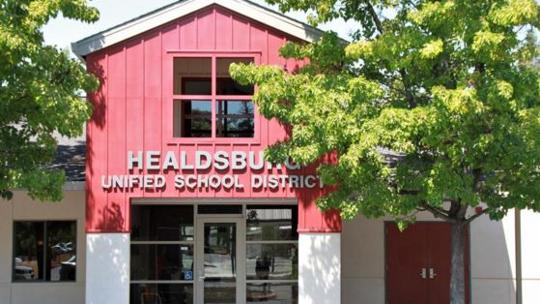The Healdsburg Unified School District (HUSD) will be bringing a draft policy that would allow for a limited amount of secondary school interdistrict transfers starting next year to the HUSD School Board in May.
At this time, the board is not considering the possibility of elementary interdistrict transfers.
The district and the school board are pursuing the possibility of interdistrict transfers mainly because HUSD enrollment continues to decline, and at the secondary level less students means some programs could be at risk of being cut if there aren’t not enough students to enroll.
“It will become harder and harder to run the programs that we are proud of, such as FFA (Future Farmers of America),” HUSD Superintendent Chris Vanden Heuvel said during the March school board meeting.
“I believe there’s a point where we become too small, especially in the secondary schools where programs become hard to justify spending $25,000 on a class of three or four kids,” said HUSD Superintendent Chris Vanden Heuvel. “Keeping an optimal number of students in our secondary schools is something that will help us keep programs and opportunities for our kids alive, and it also creates a livelier culture for our kids on the campus.”
Six years ago, the district had 1,674 total students. This year, there are 1,274 students enrolled, a dip under 1,300 for the first time.
“You can see that we’ve lost over 100 elementary students — 136 to be exact — at K-2 in the last. We’ve lost just about 198 students in 3-5.” Vanden Heuvel said during the March meeting.
According to the district’s most recent enrollment report, the high school and junior high are seeing similar data.
Current high school enrollment is 540 and Healdsburg Junior High School is at 280.
If the district were to allow secondary interdistrict transfers, Vanden Heuvel said they could potentially follow the Alexander Valley School District’s method for transfers. This method includes setting class size limits, looking at the number of resident students and continuing students, setting a number of available interdistrict slots and holding a lottery for those slots.
For example, this method can be used looking at next year’s (the 2022-23 school year) projected freshman enrollment, which is at 120 students.
“The first step would be to set a class size limit. A nice number I think would be 26 or 27 students in core classes,” Vanden Heuvel said.
There are currently five sections of English slated for students. If you divide five between the projected enrollment of 120 students that means there would be 24 students in each section.
Looking at this scenario, if they had a set class size of 27 students per each English class, they’d have 135 seats available and could have 15 seats available for potential interdistrict transfers in the 9th grade class.
Vanden Heuvel said that this would be his proposed method for interdistrict transfers.
“We’re not talking dramatically big numbers if we were to do this next year,” he said, noting that they’d be looking at bringing in maybe 20 to 25 transfer students at the most.
School board president Mike Potmesil asked what the current class sizes are like at the high school. Student trustee Annie Petersen said the calculus class currently has nine kids in it. She said she believes her science class is the biggest one with about 27 kids.
A transfer policy would have preferences and criteria to determine who could be eligible for a interdistrict transfer lottery. A lottery would take place if there were more transfer applicants than seats available. For instance, if there were 15 available seats but 20 transfer applicants, they would conduct a lottery, but if there were 15 or less applicants then there would be no lottery.
Preferences could include children of district employees, children of parents employed within the district boundaries, students who move from the district during their 11th grade year, child care needs, sibling attending school in the district, allowing students to complete a year when moved out of the district during that year, moving into the district in the immediate future, and valid interest in a particular program not offered in the district of residence.
“I’m open to interdistrict attendance because clearly we’ve seen the decline,” said school board trustee Cristal Lopez, however, she said she doesn’t think the lottery process would be ideal.
Vanden Heuvel said when he was at Cali Calmecac Language Academy they had to do a lottery for interdistrict transfers. The lottery was done with transfer hopefuls who got points through the list of preferences first.
Vanden Heuvel said he anticipates that the HUSD would have to do a lottery if the board approves of the transfer policy.
History of transfers
In 2009, the HUSD became a community funded basic aid district, meaning most of the district’s funds come from local property taxes rather than student attendance and enrollment.
At the time, the board of trustees made the decision not to allow interdistrict transfers into the district since they wanted funding to go towards resident Healdsburg students. According to district data, in 2020-21 the average spending per HUSD student was $18,799.
In late 2018, the school district considered bringing the transfer topic to a December board meeting, however, the conversation got tabled due to wildfire, floods and the COVID-19 pandemic.
Next steps
District officials will bring a draft policy to the next school board meeting in May where it will be considered in the first reading of the policy. If the board wishes to move forward with the policy it will be brought to the board in June for final approval.








